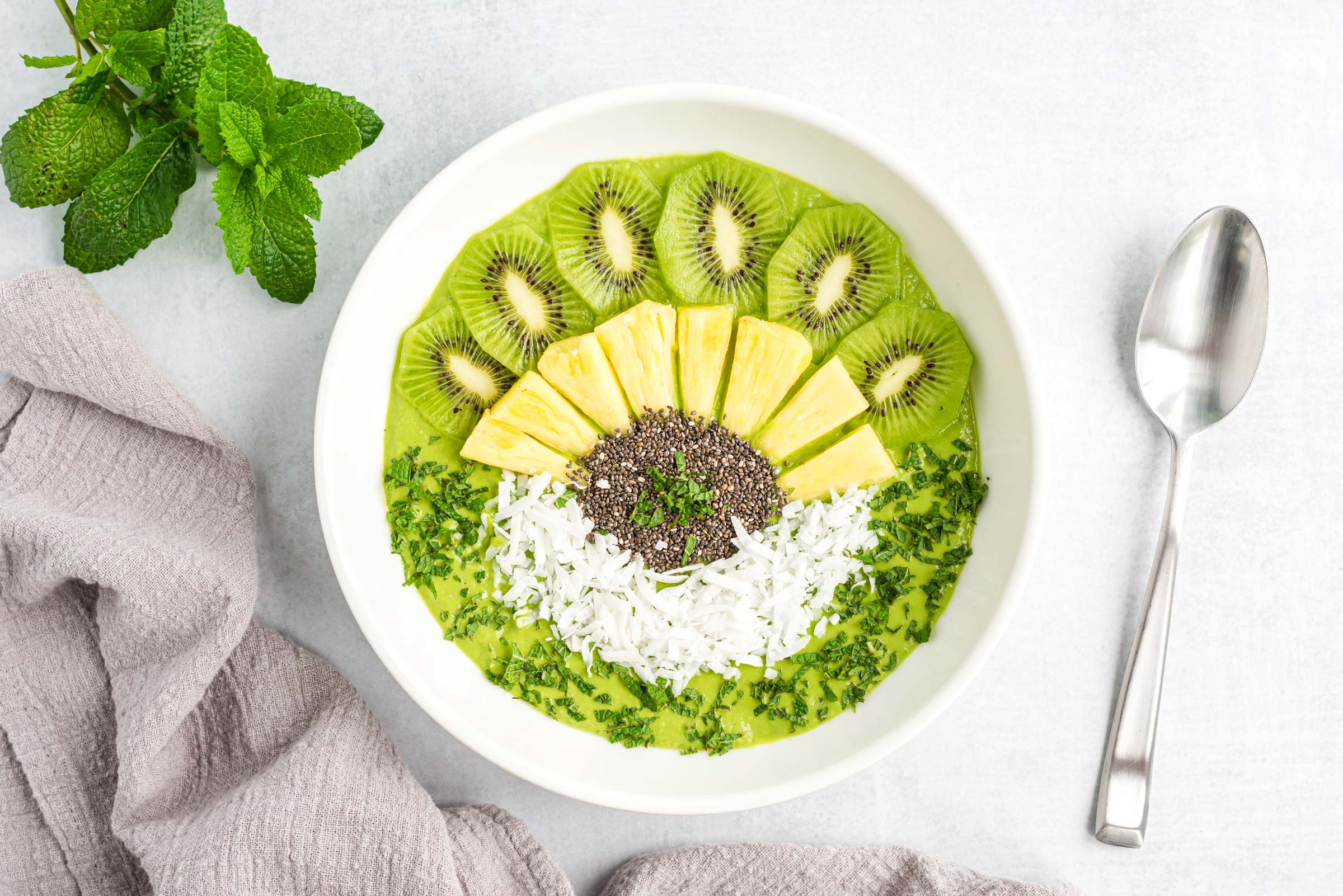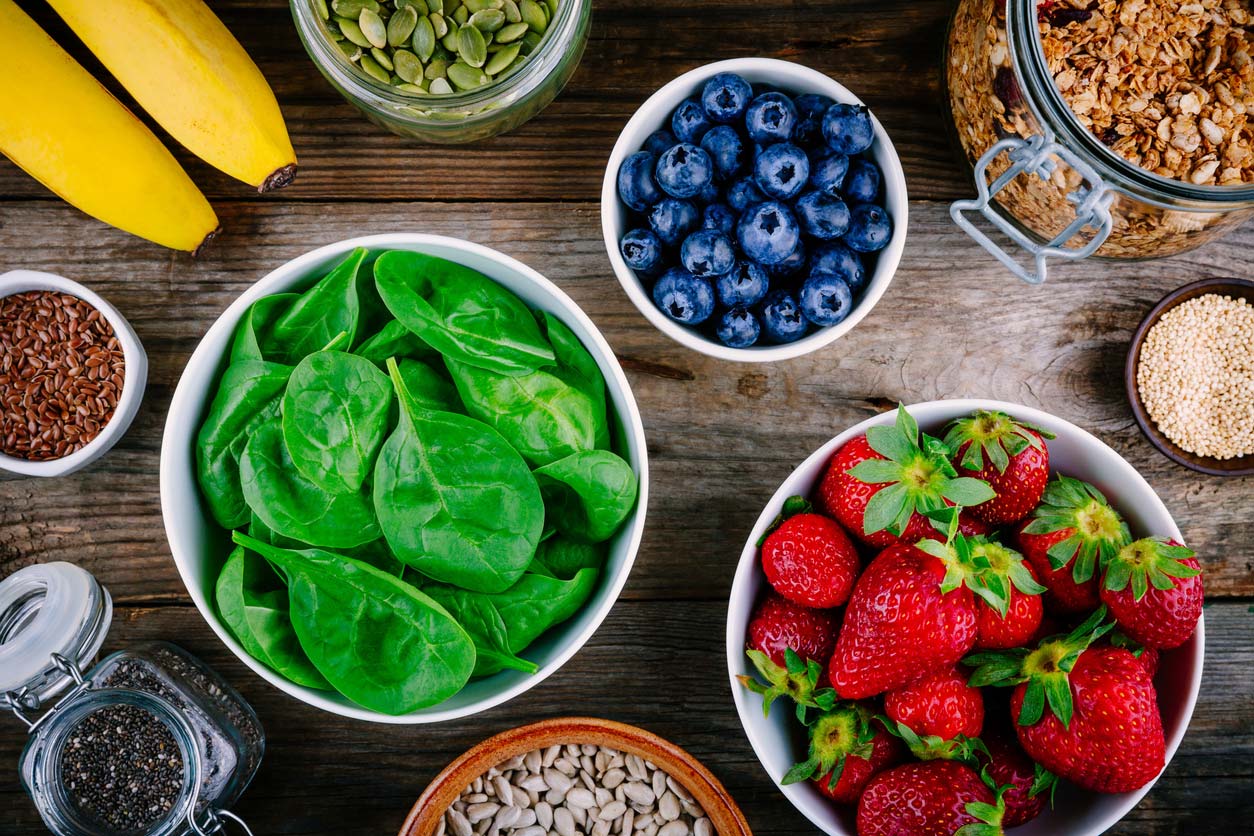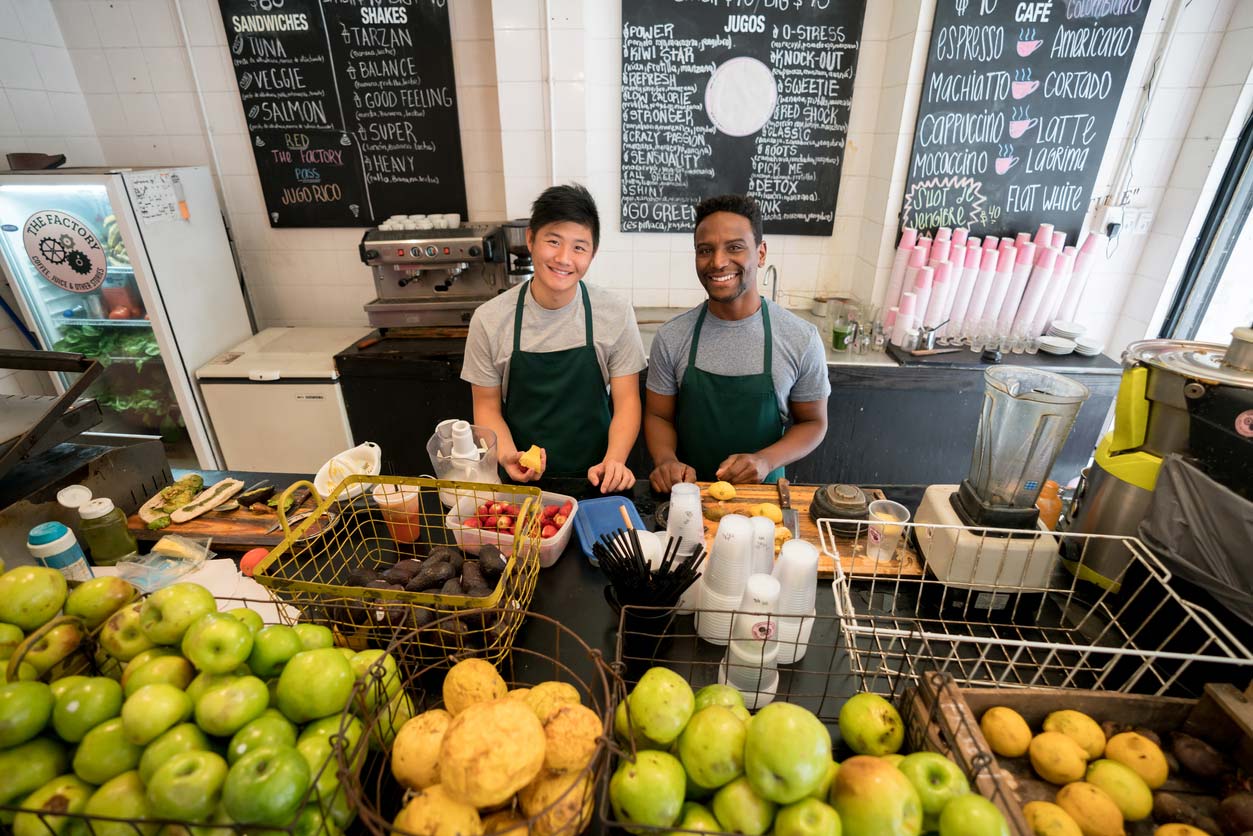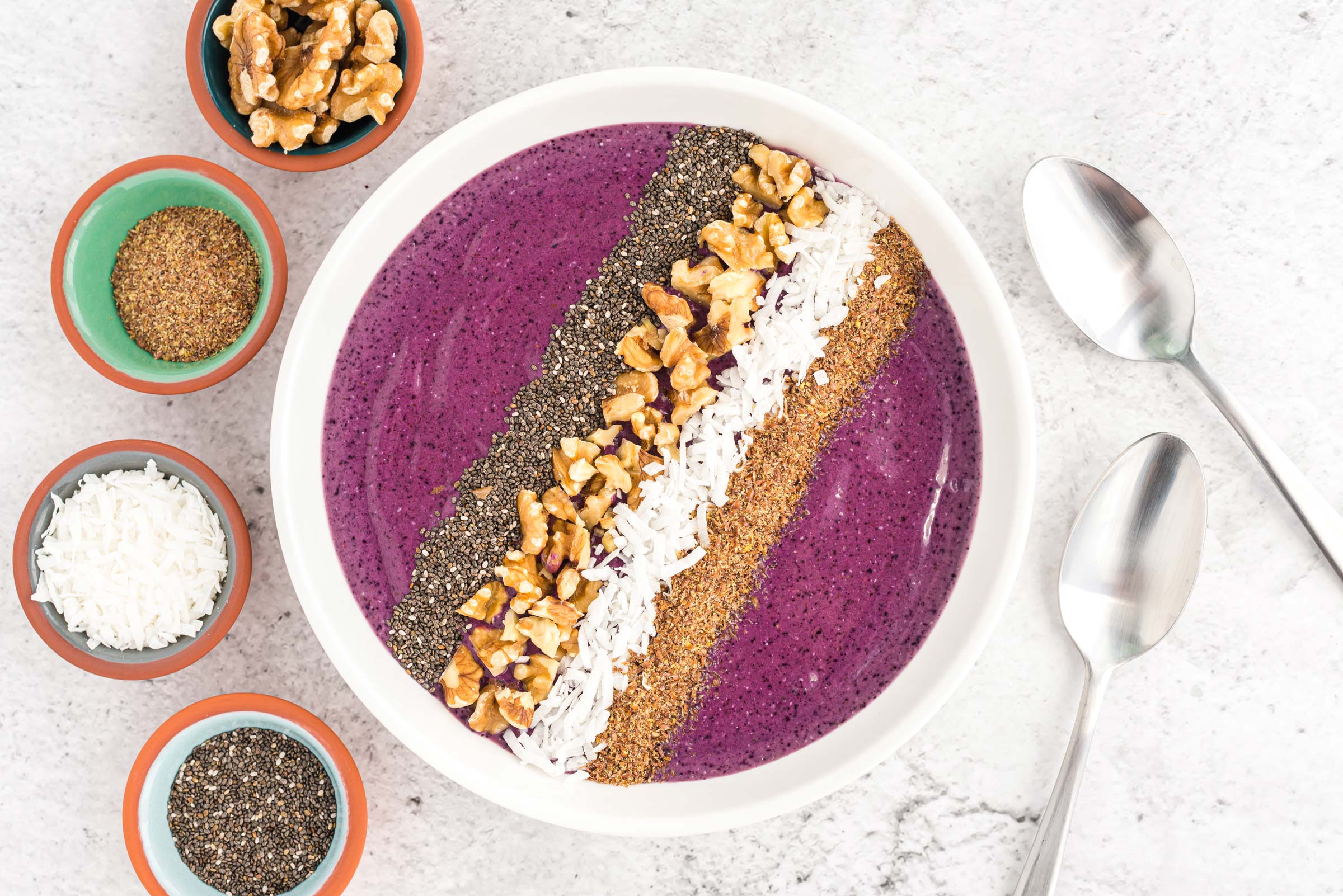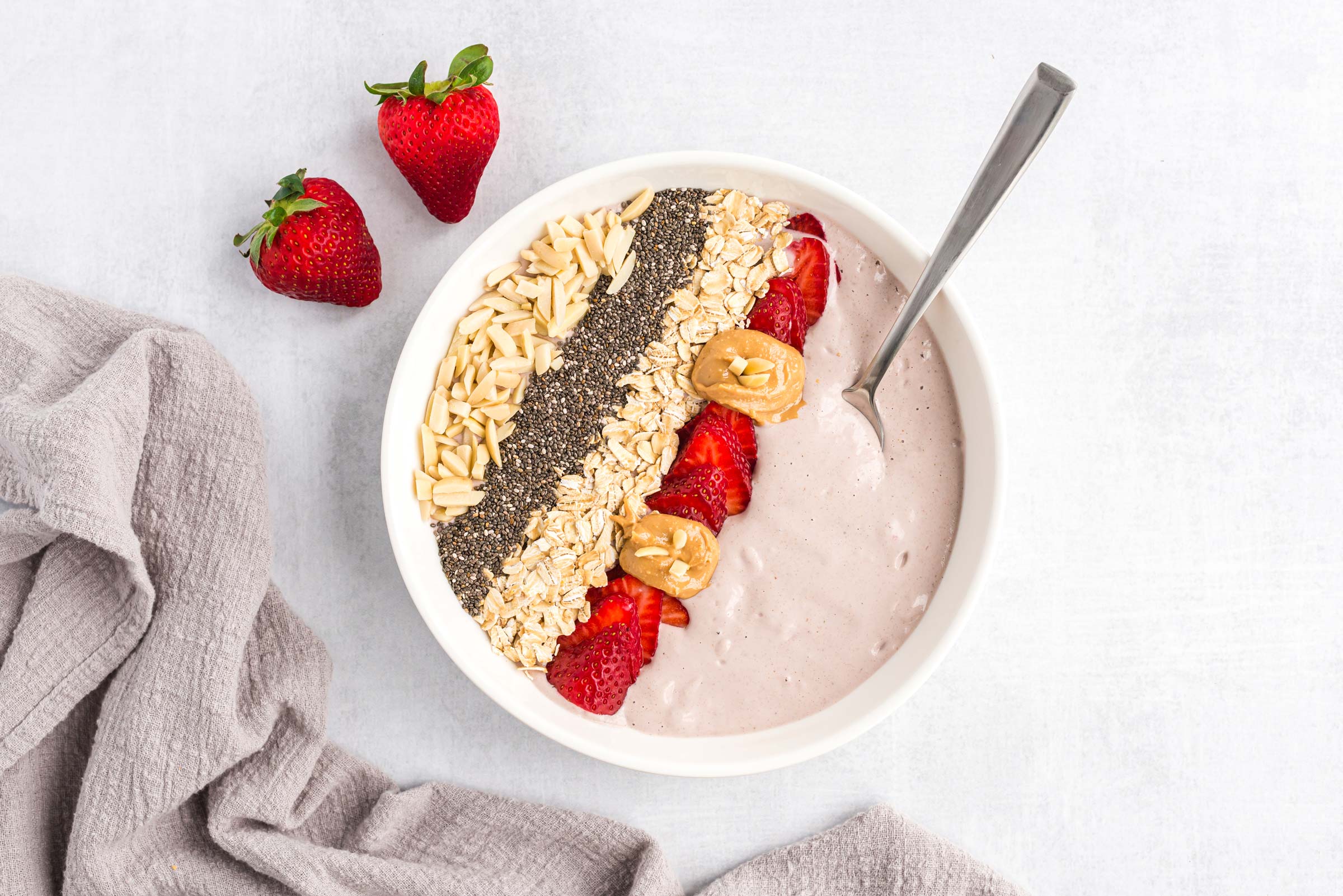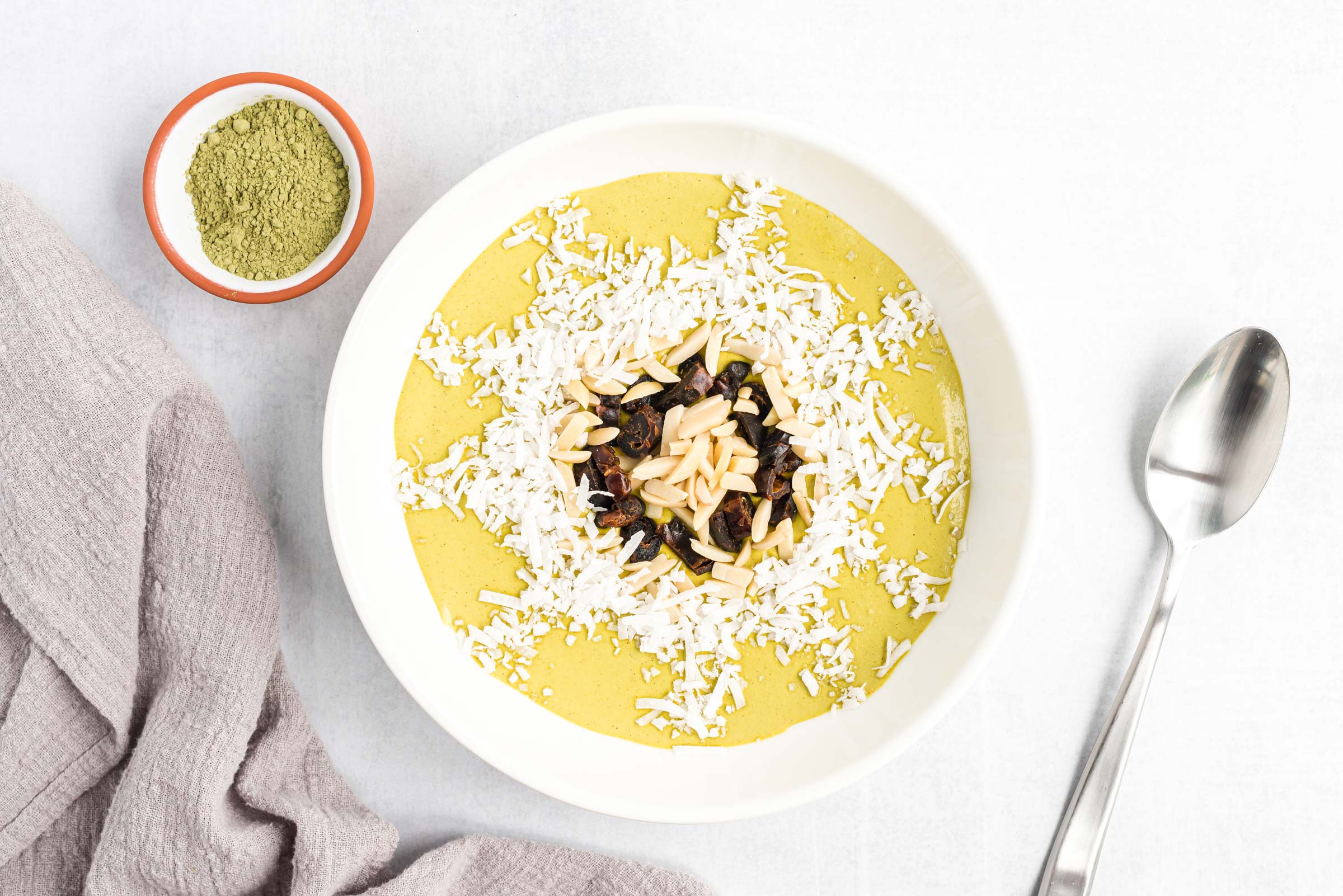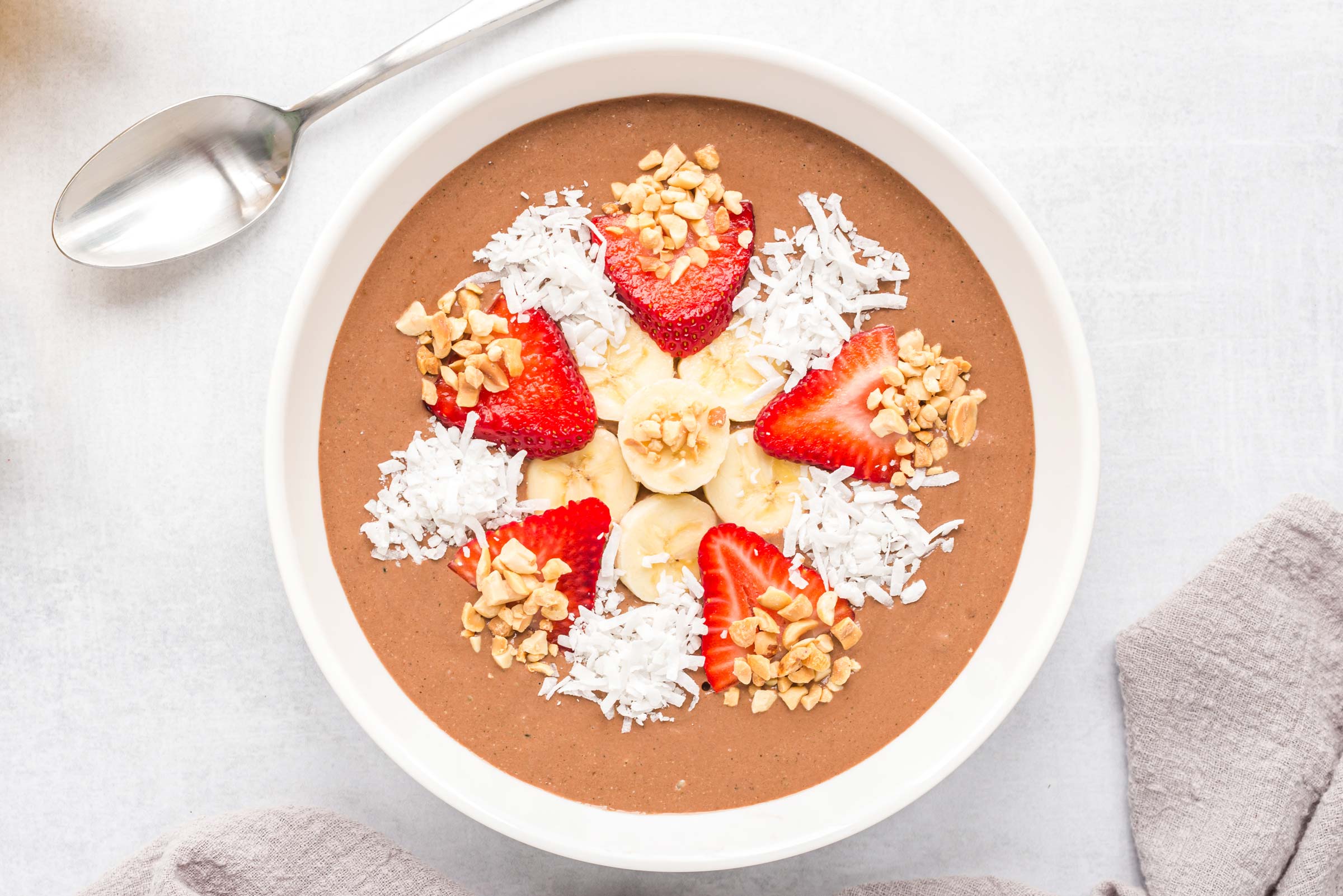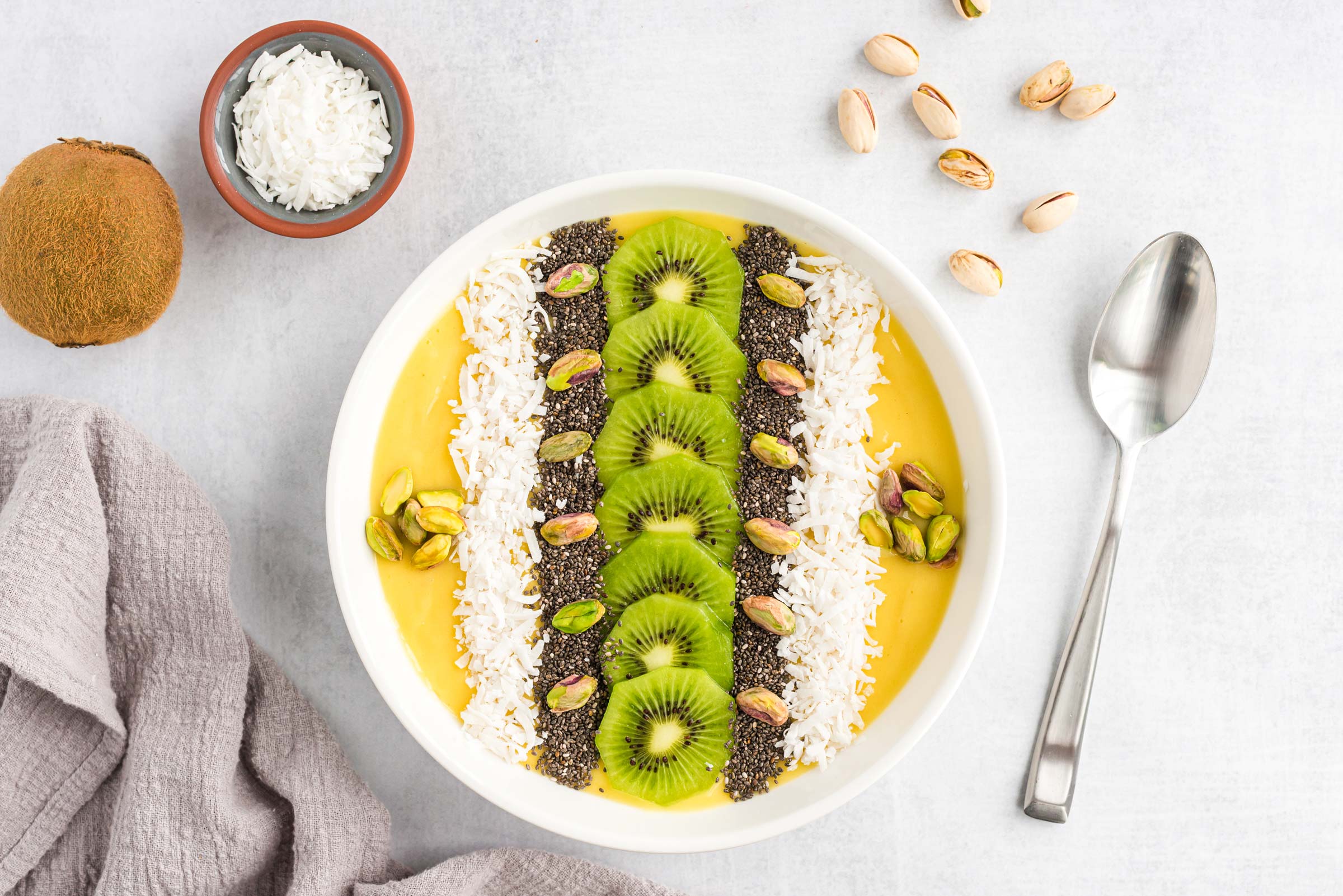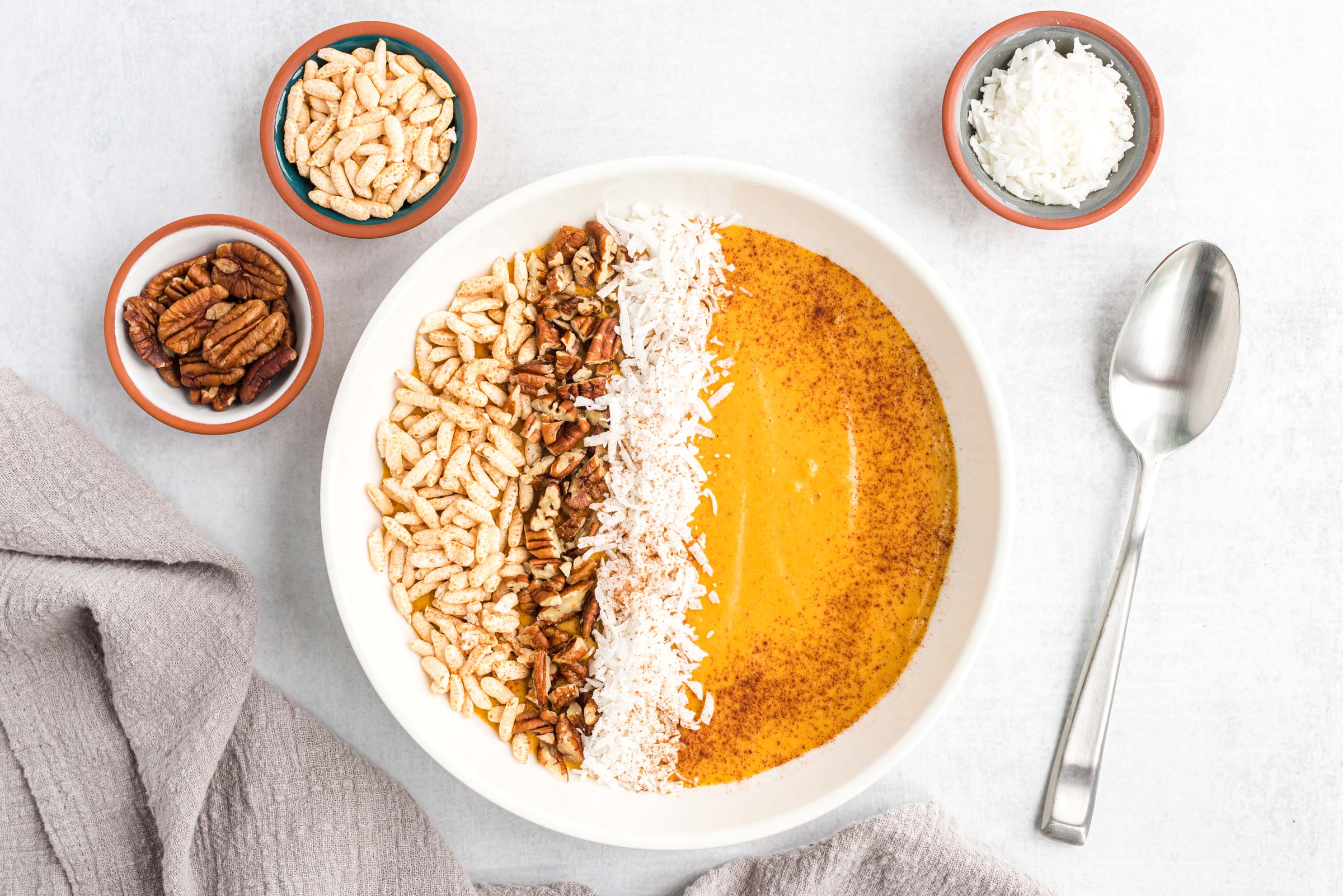When I searched Instagram this morning for the hashtag “smoothie bowl,” I was offered almost two and a half million posts. Scrolling a bit, dishes so garishly beautiful bombarded my eyes. And they made my perfectly fine yet ordinary meals seem boring and lifeless by comparison. And Instagram apparently agrees. A search for the hashtag “green salad” returned fewer than one-tenth the results. Clearly, smoothie bowls are the so-called healthy it-meal of the moment.
And it’s not like the vibrant rainbows in front of me were unhealthy. There were no Skittles, M&Ms, or canned spam consumed in the making of these works of art. The colors came from fresh fruits like strawberries, blueberries, mangoes, papayas, and kiwis, along with more exotic (to me) fruit like pitayas, lucumas, and carambolas. And of course, the crossover star of the decade, the acai berry, which arguably started the whole smoothie bowl trend thanks to its centrality in the diet of Brazilian Jiu-Jitsu founder Carlos Gracie.
So what’s the deal with smoothie bowls? Are they as healthy as the Instagram wellness and nutrition influencers say they are? Should we embrace them wholeheartedly? Are some healthier than others? And what are the best ingredients and recipes if we choose to hop on the train and make our own smoothie bowl?
What is a Smoothie Bowl?
The best way to describe a smoothie bowl is, just imagine that a bowl of oatmeal and a fruit smoothie had a baby. That is, take a normal fruit smoothie — a cold blend of liquids and fruits (fresh or frozen) — and pour it into a bowl instead of a glass. But make it thicker than a drinkable smoothie, and add some crunchy things to it as well, so you need a spoon to scoop it into your mouth. Because the smoothie bowl is thicker than a smoothie, and contains some unblended toppings, it feels like more of a meal. (And the bowl probably adds to the perception.)
The most common toppings are fresh fruits, nuts, seeds, granola, and even whole grains. They’re added for texture and mouthfeel, additional flavor, and, of course, Instagramability. (Yes, that’s a word.)
Are Smoothie Bowls Really Healthy?
Whenever you hear a question about whether a particular food is healthy, the only way to answer it usefully is to add, “compared to what?” Smoothie bowls are far healthier than breakfasts full of white sugar and white flour, fried animal foods, and artificial ingredients. But what about comparing smoothie bowls to other less processed plant-based meals?
Since smoothie bowls are typically thicker (say that five times fast) than regular smoothies, they may be more nutrient-dense, and better for blood sugar control since you’re likely to consume them more slowly. Fruit is a delicious way to consume lots of fiber, water, antioxidants, and other important phytochemicals that keep your cells functioning and your good gut bacteria happy. But a fruit smoothie can overwhelm your body with a rapid influx of fruit sugar, especially if you gulp it down fast. If you take some time to savor your smoothie bowl, that can help to mitigate the problem. Raw nuts and seeds, in moderation, can provide healthy fats and slow down the absorption of sugar into our bloodstream. And the entire family of green smoothie bowls features veggies like kale, spinach, and other leafy greens, which pack even more of an antioxidant punch.
Potential Downsides of Smoothie Bowls
What about the potential health downsides of smoothie bowls? Well, one thing to consider is the size of the bowl. Are you enjoying 2-cup servings, or crushing half a gallon in a bowl big enough to do a load of laundry in? Many of the Instagram bowls are quite large, possibly for photographic effect, but also because it’s really satisfying to polish off a thousand calories beneath the halo of “good for you.”
When you eat fresh fruit, the fiber in the fruit slows the absorption of the natural sugars. While there’s some debate over whether that’s still true in a blended smoothie, it’s clear that you can drink two bananas, a cup of cherries, a cup of raspberries, three apples, and a kiwi far faster than you can eat them. Also, it’s best to chew most of your food, as that not only slows things down, it also activates anaerobic bacteria in the grooves of your tongue that help convert nitrates in greens into heart-protective nitrites.
If you’re following Bright Line Eating, remember that blending is not part of the program, so smoothies of all kinds are off the menu.
Ingredients Matter
Finally, the makeup and quality of ingredients in a smoothie bowl matters a great deal. If you’re topping a healthful green smoothie bowl with processed granola, you may be ingesting lots of processed sugar, artificial flavors, and free radical-containing oils. If you use fruit juice as the base, you’ll be setting yourself up for a high sugar load, without enough fiber to slow it down or to trigger satiety. In other words, you could consume several hundred extra calories that wouldn’t lead you to eat less for the rest of the day — thus contributing to weight gain. Whatever fruit you add, make sure it’s in its whole form, so you get the maximum benefit from the fiber and avoid a sugar high and subsequent crash.
Where to Find Smoothie Bowls
Aside from Instagram, that is. These days, there are lots of places that have smoothie bowls on their menus. You can get them at juice bars and smoothie shops, upscale cafes, and some vegan or vegetarian restaurants. You’ll even sometimes find them in airports.
Commercial smoothie bowls come with two problems, however. First, they can be really expensive. Second, they’re often formulated to be more delicious and pretty than nutritious, so you may end up eating a lot of sugar and empty calories, along with artificial ingredients in the toppings. Make sure you know what’s really in a restaurant smoothie bowl before assuming all those colors are truly healthy.
The safest and healthiest way to enjoy smoothie bowls is to make your own.
How to Make a Smoothie Bowl
As you will recall, a smoothie bowl is nothing more than a smoothie in a bowl with toppings. So you’ll need a blender, a bowl, some toppings, and ingredients for the smoothie base.
Depending on the amount of liquid used in your smoothie bowl base, you will probably need a pretty high-powered blender to deal with the ice or frozen fruit — and to blend the smoothie base to a desired level of creaminess. But many smoothie-efficient blenders aren’t cheap. Vitamix, Blend-tec, and KitchenAid all make professional-level blenders with horsepower numbers that could plow a small field. They’re fabulous, if they’re within your budget. Some of the Ninja brand blenders can also handle ice and frozen fruit, and come in at lower price points. You might want to check out demos on YouTube before buying, as they all have different strengths and weaknesses, from ease of cleaning to loudness to container size.
Smoothie Bowl Base
Now, let’s talk about the smoothie bowl base. When in doubt, start with frozen fruit, as that adds thickness and coldness. And since it lasts a long time, you can store frozen fruit as a kitchen staple so that you know you’ll have some around when you need it. Fresh fruit also works, mixed with ice, to give you the same result. Since avocado is a fruit, adding some in can lend a satisfying creaminess and healthy source of fat to your bowl. And don’t forget the fruit that started it all: acai berry.
Vegetables for Smoothie Bowls
Next, add the veggies. Leafy greens like spinach and kale are common, and can impart a bright green hue to the smoothie as long as you use light-colored fruit like pineapple and mango. Start adding blueberries and cherries to greens, and you’ll get a color that won’t win you any followers on Instagram. Nor is it likely to ever become Pantone’s color of the year. Of course, if your goal is a healthy and tasty bowl, that might not be a problem for you. Other vegetables can offer different color and taste profiles, including beets, carrots, celery, and even bell peppers.
Liquid Mixers
Before blending, you’ll need to add liquid. But the stronger your blender, the less liquid you’ll need to add. A professional blender can handle a base with a consistency like hummus, but you’ll need a spatula to remove the contents from the container. Other blenders will burn out if challenged with a smoothie that thick, so you’ll need to add more liquid. While fruit juice is common on Instagram, I recommend against it for reasons we’ve already covered. Instead, water, coconut water, or an unsweetened plant-based milk could be your best options.
Powdered Supplements
If you want to add supplements, adaptogens, or protein powders, they can go in before blending.
Smoothie Bowl Toppings
Once your smoothie is blended and poured into a bowl, it’s time to add the toppings. Fresh, frozen, and dried fruit are lovely on top of a bowl, either matching or complimenting the color of the base. Coconut flakes, organic oats, clean, store-bought or homemade granola, and various nuts and seeds or nut and seed butters are all great choices for a healthy smoothie bowl. And below, you’ll even find a recipe that calls for amaranth, a whole grain originally cultivated by the Aztec civilization.
7 Colorful and Healthy Smoothie Bowl Recipes
Berry Delicious Omega-3 Smoothie Bowl
This nourishing bowl of deliciousness packs all of your favorite plant-based omega-3s together in one recipe! We could have called it the “Brain-Powered Bowl” since, in addition to a decent amount of omega-3s, you’ll also benefit from the anthocyanins in the berries — both of which can support brain health.
Strawberries and Cream Smoothie Bowl
Refreshing yet creamy, this bowl is the perfect way to start the day with an abundant protein and fiber boost. Or enjoy it as a pick-me-up treat mid-afternoon. No matter when you try it, know that you’re supporting a healthy body and happy tastebuds with each bite.
Morning Matcha Wake-Up Bowl
Get a little gentle boost of sustainable energy with this matcha tea- and maca-powered smoothie bowl. The base of this bowl is great if you want a natural energy boost without added sugar. But if you prefer just a touch of sweet, you might add a bit of coconut or dried fruit.
Banana Split Smoothie Bowl
The base of this smoothie bowl alone might be enough to call it a day in terms of flavor! But if you’re looking to optimize nutrition while feeling indulgent — without actually being indulgent — then add some extra nutrition in with organic cherries, your favorite nut or seed butter, or some extra banana slices.
Tropical Delight Smoothie Bowl
Bring the tropics to you with this Tropical Delight Smoothie Bowl that’s packed with vitamin C, beta carotene, and potassium. With each bite, close your eyes and envision yourself on a beautiful, breezy beach!
Lemon Detox Smoothie Bowl
If you’re a “more greens, please” person, then this Lemon Detox Smoothie Bowl is right up your alley! Made with kale, parsley, ginger, avocado, and lemon, it’s refreshing as is, or you can add chopped fruit on top for just a touch of sweetness. What a delightful way to start a healthy day!
Pumpkin Spice and Amaranth Smoothie Bowl
Fruit doesn’t have to be the only star in a smoothie bowl. Vegetables and grains deserve their chance to shine too! Especially gluten-free amaranth, which ranks as one of the highest protein-containing grains, at nine grams per cup! Sure, this is the perfect smoothie bowl for the fall season, but why not enjoy it year-round? Pumpkin is chock-full of beta carotene, an important precursor to vitamin A, which serves as a natural protector from the sun.
The Verdict on Smoothie Bowls
Smoothie bowls are a fun and colorful way to enjoy your fruits and vegetables, especially for kids. And after you check out some photos of beautiful, healthy, smoothie bowls, you might find your own childlike creativity kindled. While they’re becoming more popular and easily available in restaurants, cafes, and juice bars, it’s still best to make your own. That way, you can control the quality of ingredients and portion size. You might want to think of smoothie bowls as a special treat rather than as a regular precursor to breakfast since they’re often so high in fruit sugar and can easily contain enough calories for a meal.
Tell us in the comments:
- Have you had a smoothie bowl? If so, where did you first encounter them?
- What are your favorite smoothie ingredients?
- Do you have your own favorite smoothie bowl recipe?
